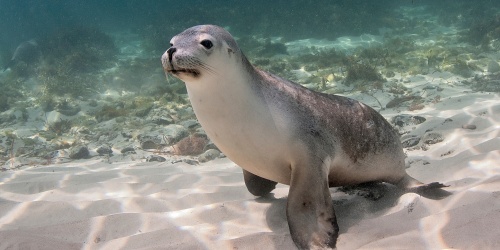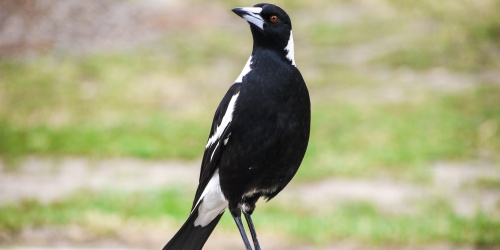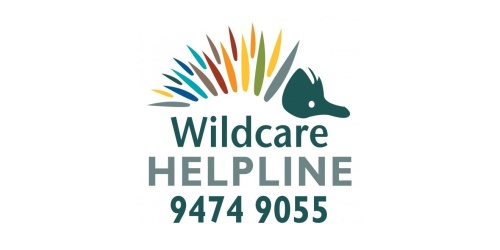
Quenda
Observing native animals is a fulfilling experience that attracts many people to areas where they can observe wildlife up close. Some people may be tempted to offer food to native animals in order to encourage a closer connection.
However, while feeding native animals may be well-intended, it can disrupt their natural behaviour and cause them health problems. It is therefore an offence to feed wildlife without lawful authority.
There are other ways to encourage wildlife to visit gardens or properties without causing harm. By providing and maintaining natural habitats with sources of food, animals can still become comfortable with the presence of humans without the need for feeding. This allows people to observe native animals up close and personal without disturbing their natural behaviour.
Attracting frogs to your garden
Creating a habitat for frogs in your garden is an easy way to help them out!
Different frog species have different preferences when it comes to their habitats.
Learn about the native frogs in your area to figure out which ones you want to attract and what kind of habitat they need.
Perth Zoo frog friendly garden information
Building a bird-friendly garden
Planting native plants is one of the simplest ways to provide support for native birds in urban areas. Discover which native plants are most suitable for your area and create an inviting environment that will attract native birds to your own garden.
Reptile-friendly gardens
Lizards and other small reptiles are an important part of any healthy ecosystem. Perth Zoo provides seven ways to help you simulate a natural reptile habitat in your own backyard.
Constructing nest boxes for native animals
Tree hollows serve as crucial habitats for various native animals, providing them with nesting sites, shelter, roosting and protection from predators.
Support the conservation of native animals in your own backyard. Learn about the different types of boxes and locations required for different animals.
Building a butterfly-friendly garden
Butterflies are essential in our environment because they pollinate plants that other native animals depend on to survive. Learn more about what to plant to build a healthy ecosystem in your own backyard.
Is feeding native animals harmful to their health?
Human food, bacteria and human interaction can be very harmful to native animals. Native animals have specific dietary requirements that are different to humans. Human food can interfere with their natural feeding habits and cause health problems. By not feeding them, we help protect their health and ensure they receive the proper nutrients they need.
Along with protecting their health, other reasons to refrain from feeding native animals include:
- Reducing human-wildlife conflicts: Feeding wild animals can encourage them to become dependent on human handouts, leading to aggressive behaviour and an increased risk of human-wildlife conflicts. The natural behaviours of native animals like ravens, corellas and possums, can lead to damage or nuisance in residential areas where their numbers are high. By not feeding them, we are reducing the likelihood of such conflicts and promoting peaceful coexistence between humans and wildlife.
- Preserving natural behaviour: Wild animals have evolved over time to find their own food sources and learn important survival skills. By feeding them, we disrupt their natural behaviour and may cause long-term harm to their population. Not feeding them, allows them to maintain their natural behaviour for theor long term survival.
- Unnaturally high population numbers: Providing a regular artificial food source can lead to unnatural increases in animal numbers which can put extra pressure on natural food sources and may lead to the loss of plant species such as orchids. It can also attract birds or kangaroos that could cause significant damage to surrounding land and create a focal point for outbreaks of highly transmissible diseases that can kill large numbers of animals, or even be transmitted to humans.
- Increased aggression and predators: Feeding native animals can also result in increased aggression among animals, as well as an unnatural concentration of predators such as hawks and owls. This can lead to unnaturally high incidents of aggression, stress and injuries among the animals, and drive other species away by aggressive behaviour or by preying on them or their young. It may also result in increased predation on animal populations in the immediate and surrounding areas, where populations were previously stable.
- Increased risk of disease: An unnatural concentration of animals can also provide the focal point for outbreaks of highly transmissible diseases that can kill large numbers of animals. Some diseases such as Salmonella, Toxoplasmosis, Psitticosis and E. coli infections are also transmissible to humans through exposure to animal faeces and urine, or through direct contact with the animals themselves.
WA Naturally Bush Book series
WA Naturally has a wonderful range of publications available to help you enjoy and learn more about Western Australia's wildlife.
Choose from recreation guides, pocket-sized Bush Books, children's storybooks and much more.
WA Naturally publications are available online, from good bookshops, visitor centres and adventure stores across WA.



